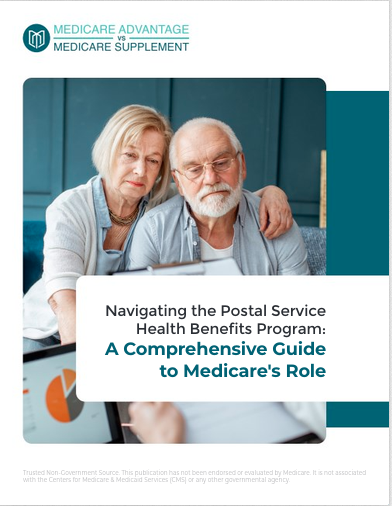Key Takeaways
-
Medicare is divided into four main parts—A, B, C, and D—but the naming convention and overlap between coverage options make it more complicated than it appears.
-
Choosing the right mix of Medicare coverage in 2025 requires understanding enrollment timelines, cost-sharing rules, and coordination with other forms of insurance.
The Confusing Structure Behind a Simple Idea
Medicare was introduced with the goal of simplifying healthcare access for older adults and certain individuals with disabilities. But what was intended as a clear solution now feels more like a maze of confusing parts, plans, and rules.
At first glance, you might assume that Medicare Parts A, B, C, and D are just four elements that work together neatly. In reality, they function more like options—and choosing the wrong combination or missing an enrollment window can leave you without essential coverage or saddled with high costs.
Let’s walk through why the current layout is harder than it should be—and what you need to know to make informed decisions in 2025.
What Each Medicare Part Really Covers
Medicare Part A – Hospital Insurance
Part A is considered your inpatient hospital coverage. It covers:
-
Hospital stays
-
Skilled nursing facility care (after a qualifying hospital stay)
-
Hospice care
-
Limited home health care services
Most people don’t pay a monthly premium for Part A because they paid Medicare taxes while working. But there are still deductibles and coinsurance amounts. In 2025, the hospital deductible per benefit period is $1,676.
Medicare Part B – Medical Insurance
Part B handles outpatient care and medically necessary services, such as:
-
Doctor visits
-
Preventive screenings
-
Durable medical equipment
-
Mental health services
-
Outpatient surgeries
In 2025, the standard monthly premium for Part B is $185, and the deductible is $257. Part B is optional, but if you delay enrollment without having other credible coverage, you may face lifelong penalties.
Medicare Part C – Medicare Advantage
Part C isn’t another layer added on top of A and B. Instead, it’s a bundled alternative offered through private insurance plans that must provide at least the same coverage as Parts A and B. Many Part C plans also include Part D (prescription drug coverage) and additional benefits like dental or vision care.
The downside? These plans operate with provider networks, meaning you may have fewer choices for doctors or hospitals. And the cost-sharing structure (copayments, coinsurance, out-of-pocket limits) can differ widely by plan.
Medicare Part D – Prescription Drug Coverage
Part D plans help cover the cost of prescription medications. In 2025, a new out-of-pocket cap of $2,000 offers better financial protection for beneficiaries.
Still, the benefit structure includes a deductible (up to $590), a coverage phase, and a catastrophic phase, which has now been simplified. Plan details can be hard to compare, especially when drug formularies differ widely.
Why the Parts Don’t Always Add Up Clearly
Medicare’s structure might make sense on paper, but the way these parts interact in real life is full of complexity.
Enrollment Periods Vary by Part
Each part of Medicare has its own enrollment timeline. That’s confusing enough—then add in penalties for missing them.
-
Initial Enrollment Period (IEP): Starts three months before your 65th birthday, includes your birthday month, and ends three months after.
-
General Enrollment Period (GEP): January 1 to March 31 annually, for those who missed their IEP.
-
Annual Enrollment Period (AEP): October 15 to December 7, to switch plans.
-
Medicare Advantage Open Enrollment: January 1 to March 31, only for people already enrolled in a Medicare Advantage plan.
Timing your enrollment correctly requires advance planning and awareness of how each part affects the others.
Penalties and Gaps Can Surprise You
-
If you delay Part B without other credible coverage, your monthly premium goes up by 10% for each full 12-month period you were eligible but didn’t enroll.
-
If you don’t enroll in Part D on time, you’ll also pay a penalty unless you had credible prescription coverage.
Coordination With Other Insurance Adds Layers
If you have employer coverage, retiree benefits, or COBRA, figuring out how Medicare fits in becomes harder. Which plan pays first? Should you delay enrollment? The answers depend on your employment status, plan size, and timing.
And if you’re covered under a spouse’s insurance or military benefits, you’ll need to carefully examine how Medicare coordinates with those.
The Naming System Is Misleading
The use of the letters A, B, C, and D implies a simple progression, but it misleads many people. Here’s why:
-
Part C replaces A and B—not adds to them.
-
Part D doesn’t connect directly to A or B—you have to add it separately unless it’s included in a Part C plan.
-
Some people think Part B is optional—but skipping it without other coverage leads to lifelong penalties.
This naming system doesn’t reflect how the coverage works in practice, which adds to confusion.
Medicare Advantage Isn’t Automatically Better
Many people see Medicare Advantage plans (Part C) as a better option because they often include extras like dental, vision, and fitness memberships. But these plans come with trade-offs:
-
Limited provider networks mean you may not be able to see your preferred doctors.
-
Prior authorization rules can delay care.
-
Annual changes to plan benefits and coverage areas can result in unexpected changes in your healthcare.
If you switch to a Medicare Advantage plan and later want to return to Original Medicare and buy a medigap policy, you might not be able to without undergoing medical underwriting—especially if you’ve had the Advantage plan for more than 12 months.
Prescription Coverage Isn’t Straightforward Either
Even with Part D reforms in 2025, there are still multiple layers:
-
Deductible phase: You pay out-of-pocket until you meet the deductible (up to $590).
-
Initial coverage: Your plan and you share the cost.
-
Catastrophic coverage: Now kicks in after you’ve paid $2,000 in out-of-pocket costs, capping your annual burden.
Each plan has its own drug formulary and pricing tier system. That makes it harder to know whether your prescriptions are covered or what they will cost.
Supplemental Coverage Isn’t Built-In
Even if you have Medicare Parts A and B, you’re still responsible for deductibles, copayments, and coinsurance. Many people choose to buy a Medigap (Medicare Supplement Insurance) policy to help cover these gaps—but you must do so at the right time.
If you apply for a Medigap policy after your initial enrollment window closes, insurers can require medical underwriting, which may lead to denial or higher premiums.
Annual Plan Reviews Are Crucial
Every year, your Medicare plan can change—whether it’s a Part D prescription plan or a Medicare Advantage plan. These changes may include:
-
Changes to drug formularies
-
New premiums, copayments, or deductibles
-
Changes to provider networks
-
Coverage for new or discontinued services
That’s why the Annual Notice of Change (ANOC) you receive each fall deserves a close look. Failing to review it can lead to surprise bills or lost access to medications and doctors.
Why You Shouldn’t Make Assumptions
It’s easy to assume that Medicare covers everything once you’re enrolled. But unless you understand each part’s limits, you could face unexpected costs:
-
Dental, vision, and hearing are not covered under Original Medicare.
-
Long-term care (such as nursing home stays beyond skilled care) is not covered.
-
Foreign travel is mostly excluded, except in limited emergencies.
Knowing what’s not covered is just as important as knowing what is.
Making Sense of Medicare in 2025
With updates to costs, new caps in Part D, and changes in plan availability, staying informed is more important than ever. Medicare is not a one-size-fits-all system, and choosing coverage involves:
-
Understanding how each part works
-
Evaluating your health needs
-
Considering your prescription drugs
-
Reviewing provider access and restrictions
Take the Next Step Toward Clarity
Medicare may be built around four parts, but that doesn’t mean it’s easy to piece together. In fact, making the right choice often means balancing coverage, timing, and out-of-pocket costs—all while avoiding penalties.
Don’t navigate this alone. A licensed agent listed on this website can walk you through your options, help you avoid common missteps, and ensure your plan works for your life in 2025.










